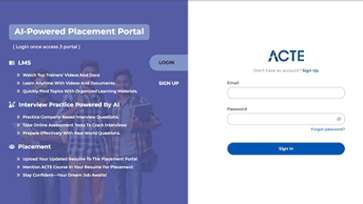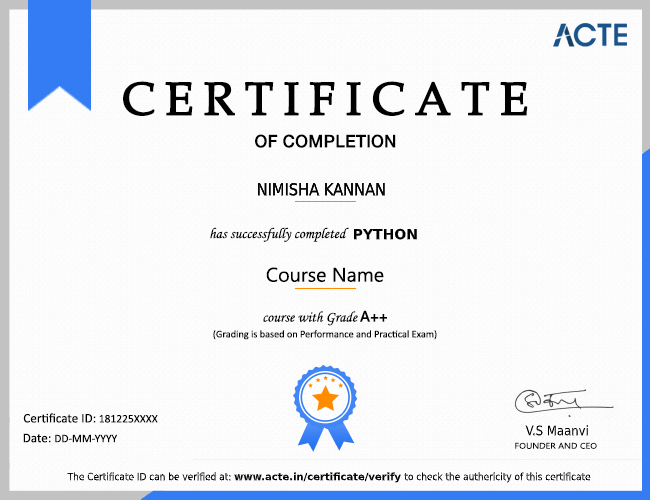Robotic process automation (RPA) doesn’t sneak up on many people anymore. It’s already a hot topic in IT and business circles. RPA is considerd as the fastest-growing enterprise software category last year, and there are plenty of other numbers that speak to widespread interest in the technology already. Start learning RPA online training & certification and enhance your career with the help of ACTE.Start Learning with us ACTE Robotic Process Automation (RPA) Classroom & Online Training Course.
The growth of the industry and widespread adoption of RPA will drive job growth as well. Many types of jobs are available in RPA, including developer, project manager, business analyst, solution architect, and consultant. This is fact, going to be the future and most important thing in the coming years. RPA in the future is going to incorporate the following things: Incorporating AI for advanced decision-making and inferencing.
Meanwhile, there are so many good opportunities are been involved in the future scope of RPA can be observed in the field of data entry and data rekeying jobs. These tasks could easily automated with RPA. The various repetitive tasks such as formatting, data assembling or anything, which requires a series of steps, that can easily carried out with the help of RPA. RPA will definitely become the next revolution in technology and you will surely find thousands of jobs opening every year. There are more than 5 million jobs awaiting you, right now.
However, robotic process automation (RPA) anticipated evolving and soaring over the forecast period. The modern enterprises need robotic process automation for faster implementation, execution, and scaling. Technological advancements have triggered businesses to overcome new challenges aimed to cope with changing consumer demand and requirements. In the recent past, the adoption of robotic process automation has captured the attention of many SMEs and large enterprises. This can be able to attribute to RPA’s ability to deliver seamless operation coupled with significant value addition from the resources.
We are happy and proud to say that we have strong relationship with over 700+ small, mid-sized and MNCs. Many of these companies have openings in Robotics. Moreover, we have a very active placement cell that provides 100% placement assistance to our students. The cell also contributes by training students in mock interviews and discussions even after the course completion.
Absolutely it’s an future field where, According to Forrester Research (Nov 2015), up to 9% of the global workforce will be threatened by RPA software in the near future. The change is coming, and it is up to process improvement professionals to prepare for this disruption by properly educating their corporations on the do’s and don’ts of RPA. Robotic process automation (RPA) been heralded as the next big thing in process management. Google Trends reports show that the last 2 years have seen a peak in interest in these technologies.
The Difference between Robotic Process Automation and Artificial Intelligence. RPA is a software robot that mimics human actions, whereas AI is the simulation of human intelligence by machines. RPA is a technology that uses specific set of rules and algorithm and based on automated a task. Mean While AI is focused more on doing a human-level task, RPA is practically a software that reduces human efforts — it is about saving the business and white-collar workers' time.
Robotics Process Automation (RPA) allows organizations to automate task just as a human being was doing them across application and systems. ... RPA does not require the development of code, nor does it require direct access to the code or database of the applications. Initially, coding skills are not required. However, if you want to learn more of RPA, at least one programming language would be required to extend the existing RPA functionality. There are no prerequisites for Automation Anywhere. No coding is required..... Automation Anywhere empowers organizations to automate the processes that has been executed by the humans.
Our courseware is designed to give a hands-on approach to the students in Robotics Automation. The course is made up of theoretical classes that teach the basics of each module followed by high-intensity practical sessions reflecting the current challenges and needs of the industry that will demand the students’ time and commitment.
In 2020, RPA is going to claim its place as a central platform for other enterprise automation tools. RPA has been around for the last few years and has advanced considerably. It can manage any types of tasks that are repetitive and predictable. It frees up the resources to focus on tasks that require creativity, decision-making and judgement. As per Forrester, RPA Market will reach $2.9B by 2021.
The future certainly belongs to RPA, and workforces around the world are investing heavily in this efficient technology to fast-track organizational efficiency, effectiveness and profitability. Nonetheless, global robotic process automation has come a long way since 2016. At the time, RPA software purchases amounted to $73 million. This increased to $113 million in 2017, $153 million in 2018, and $192 million in 2019. In 2020, HFS Research estimates that this figure will rise to $232 million and by 2021 to $272 million. These projections indicate that there is strong growth in RPA adoption in the global market. RPA services have increased rapidly since 2016, rising from $198 million, to $630 million in 2019. By 2021, that figure is expected to rise to $952 million. Experts roundly agree that RPA is the future of IT automation
The growth of the industry and widespread adoption of RPA will drive job growth as well. Many types of jobs are available in RPA, including developer, project manager, business analyst, solution architect, and consultant. People are often concerned about robotic process automation taking jobs away from real people. But a lot of companies who need manual data entry already aren’t hiring local employees for those tasks. They’re outsourcing their data entry overseas. Since the bots would be managed/hosted here in the USA, using RPA actually repatriates jobs.
Top RPA Trends in 2020!
With the continuous rise of automation in the industry these days, leveraging RPA techniques has enabled business organizations to increase productivity by automating trivial and repetitive tasks. RPA has NOW plunged into almost every industry prevailing in the business space.
RPA bots are being used everywhere! According to Deloitte’s third annual RPA survey, 53% of survey respondents are beginning their “RPA journey”. Big names have already started using RPA techniques in their businesses, when will you? Hire RPA developer to incorporate RPA benefits for scaling your business growth.
Here, we have discussed top RPA trends. Let’s read further to know about other RPA trends in 2020 dominating the business world.
Cobots in the Workplace!
“Collaborative Robots”, popularly known as“cobots” work in collaboration with humans to perform their assigned tasks. Cobots physically interact with humans for operating functions.
Cobots provide great value to organizations by augmenting and enhancing human capabilities with strength, precision, and data capabilities. By having humans and cobots work together, companies are leveraging the benefits of improved efficiencies and reduced costs. This is why,
By 2025, the market for collaborative robotics is expected to reach $12 billion, says a report.
2016 turned out to be an exceptional year for the automation sector. According to statistics from the Robotic Industries Association (RIA), a little more than 34,600 robots valued at approximately $1.9 billion were ordered in North America, representing growth of 10% in units over 2015.
Cobots can reduce human input on production by up to 50%. Here are a few ways they are currently deployed in collaboration with humans.
Ford Fiesta Plant
In Cologne, Germany, Ford factory workers, and cobots are teaming up to install shock absorbers on cars.
Amazon fulfillment center
Amazon uses Cobots for bringing shelves of merchandise to Amazon associates thus helping them to prepare for shipment. Now with the help of Cobots, it takes just 15 minutes to complete an order that used to take an hour before.
As you can see, Cobots by enabling humans and robots to complement each other helps in increasing business productivity. This is for sure one of the newest RPA trends in 2020 offering cost-effective solutions to industries existing in the market space.
In 2018, the global revenues from collaborative robot production exceeded $550 million, says a report. The analysis also forecasts that the revenues for collaborative robots will reach $5.6 billion in 2027.
Medical Robots!
With the increase in surgeries, medical robots are on the rise. Market-ready surgical robots have helped ease the strain on the medical surgeons thus rendering improved medical facilities to patients.
Hospitals around the world are using medical and surgical robots for offering quick and better medical treatment to patients. With such widespread use of these across the globe, medical robots are clearly one of the Robotic Process Automation trends in 2020. Surgical robots are currently the largest application market, says Tractica.
The market for healthcare robots, including surgical robots, hospital robots, and rehabilitation robots, will grow in revenue from $1.7 billion in 2016 to $2.8 billion by 2021 at a compound annual growth rate (CAGR) of 9.7%, says a report.
The University of Oxford conducted a trial of the PRECEYES Surgical System. The medical test involved 12 patients who needed membranes removed from their eyes or had a buildup of blood underneath the retina due to age-related macular degeneration. Half of the people got conventional procedures, while others used robotic surgeries.
All the surgeries were successful, but the robotic approach was more effective than doing the procedures manually, says the report. This is why there are plans to use surgical robots in the future for dispensing gene therapy to the retina. Clearly, Medical robots are one of the most happening RPA trends in 2020!
Robotics in Agriculture!
Can you imagine using automation in Agriculture? Amazed! So was I when I read about one of the Robotic Process Automation trends doing the rounds: Agriculture Robots. Let’s read about this in detail.Agriculture robots are mobile robots that are used to automate traditionally labor-intensive agriculture practices, with some processes being fully autonomous and some of these being semi-autonomous.The advent of Agriculture robots has revolutionized the agriculture sector.






























